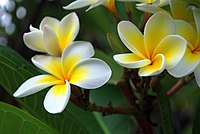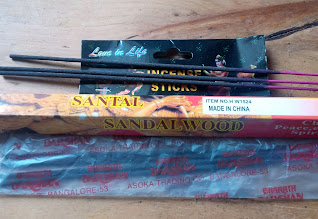Readers please note that backflow cones look attractive, and you might want to try one, but they do leave an unpleasant smell afterwards, the smoke will stain surrounding furniture, so take care where you are burning them, the burners are difficult and unpleasant to clean (use gloves!), and there are health concerns because of the amount of tar they produce.
I've seen videos of backflow cones on YouTube, and they look great, so I bought a backflow burner, and some cones. I bought the cones on Amazon from a dealer called Gemini_mall for around £2 including delivery I get a pack from China of 50 coloured pieces which do exactly what they are supposed to do. They look great, and I made my own video.
The only problem is that they are pressed sawdust dipped in some really shitty chemical perfume. Whatever colour the cone, the scent is really bad. And, as it flows downward and goes over the furniture it stains it - so be careful of where you use these backflow cones, and make sure you rest them on something to protect the surface below.
I wondered for a while how the smoke flows down rather than up, so I searched around and found the answer. The cone has a hollow tube - as the cone burns the smoke comes out at the top (as normal) and - as the burning reaches the hollow tube inside the cone, the smoke goes into that as well. When the smoke is in the hollow tube it is below the heat source, so starts to cool. When it reaches ambient room temperature it starts to fall because smoke is heavier than air at ambient temperature because it contains dense particles. It then falls out of the hole at the bottom of the cone and through the hole in the cone holder, and so then flows into the supporting dish in whatever design the cone holder had made. Simples!
I absolutely love the idea. I love the flowing smoke. But I hate these crap cones from China. I've had a search around, and I can't see any named companies making these backflow cones. They tend to be nameless cones imported from China.
If anyone knows of a decent backflow cone maker, please, please let me know.
As it is, these cones are the worse I have ever known. And the staining is a serious nasty as well. Be warned!
Date: Dec 2017 Score: 02
The only problem is that they are pressed sawdust dipped in some really shitty chemical perfume. Whatever colour the cone, the scent is really bad. And, as it flows downward and goes over the furniture it stains it - so be careful of where you use these backflow cones, and make sure you rest them on something to protect the surface below.
I wondered for a while how the smoke flows down rather than up, so I searched around and found the answer. The cone has a hollow tube - as the cone burns the smoke comes out at the top (as normal) and - as the burning reaches the hollow tube inside the cone, the smoke goes into that as well. When the smoke is in the hollow tube it is below the heat source, so starts to cool. When it reaches ambient room temperature it starts to fall because smoke is heavier than air at ambient temperature because it contains dense particles. It then falls out of the hole at the bottom of the cone and through the hole in the cone holder, and so then flows into the supporting dish in whatever design the cone holder had made. Simples!
I absolutely love the idea. I love the flowing smoke. But I hate these crap cones from China. I've had a search around, and I can't see any named companies making these backflow cones. They tend to be nameless cones imported from China.
If anyone knows of a decent backflow cone maker, please, please let me know.
As it is, these cones are the worse I have ever known. And the staining is a serious nasty as well. Be warned!
Date: Dec 2017 Score: 02
***
 |
| Incense by Country |












































